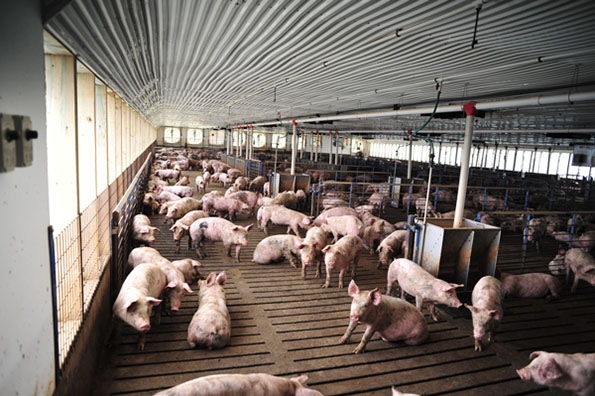April 25, 2016

Next year will be a year that goes down in history for the U.S. swine industry. With the Clemens Food Group opening a new plant in Coldwater, Mich., and Triumph/Seaboard opening theirs in Sioux City, Iowa, we will see the first significant increase in daily slaughter capacity in more than 10 years. These plant openings, along with the plans for a new plant to be built near Mason City, Iowa, in 2018 will drive continued demand for additional finishing spaces in the upper Midwest. The question that comes to my mind is, who will have the ability to get these spaces built?
Looking back, AgStar’s down-line finishing barn program has been one of the best opportunities we’ve ever seen for our Young Beginning Farmer Program. Many farmers got their start in the late ’90s and early 2000s by building a finishing barn for a local neighbor. They were looking for ways to mitigate their need for expensive commercial fertilizer and build equity in fixed assets. These barns provided access to manure and also generated a modest stream of free cash flow which was available to cover family living costs or to reinvest in additional farm activities.
Over the past 25 years, construction costs for new finishing barns have nearly doubled. The quality and longevity of barns built today are much better than those built in the ’90s and early 2000s, but costs are clearly higher. During this time, contract barn rates have risen as well, however this increase has been closer to 25%. In order to ease the cash flow demands from a larger loan payment, the loan repayment span has gone from 10 years to 15 years. However, the cash flow stream during the loan repayment term is now largely consumed by barn operations with only limited amounts of cash available for living costs.
While cash may be constrained, the access to manure and long-term equity growth continues to be a strong incentive, generating more interest than ever. Integrators across the country tell us that their business development teams have a list of people who want to build new barns that exceed their current space needs. While the interest to build is there, the ability to do so may not be.
Again, reflecting on the late ’90s and early 2000s, grain farmers were in a stable to extremely profitable era. Over the past two to three years, a growing number of grain farmers have struggled to maintain positive cash flows as crop prices have retraced to levels that we haven’t seen in 10 years. While prices are low, input costs remain high. We’re currently enjoying a spring rally, but the long-term USDA price forecasts remain at levels that will result in many struggling to remain profitable. With tight profit margins, many farmers are looking to contract finishing barns as a way to offset earnings and sustain equity growth at a time when cash grains are posting losses. The challenge is that the tighter finishing barn free cash flows will not offset cropping losses. While the cash flow from the new finishing barn will support itself, lenders will have difficulties extending new credit to producers who have incurred year-over-year losses and have additional future losses forecasted, even with the barn included in the projections.
With working capital strained and repeated years of negative cash flow, many grain farmers have re-leveraged their existing finishing barns to generate the cash needed to put next year’s crop in the ground. Historically, these individuals have been ideal candidates for new barn construction. Their pig care, communication and management abilities have already been proven. Furthermore, with a large portion of the original loan already being repaid, the rental payments on the new and original spaces have typically been more than enough to move forward with a new barn. The losses across the grain industry and prior re-leveraging of their balance sheets are placing new found constraints on their ability to expand.
As hog operations look to proactively manage their future finishing space needs, it’s important to stay in contact with existing growers to best understand their intentions and abilities to build additional finishing barns. It will be increasingly important to have deeper discussions with new growers about their financial position and their ability to gain the credit approval needed to build the new barn early in the discussions. Connect with your local lender early in the process with new growers to ensure the financing hurdle is cleared sooner rather than later. As a new grower looking to build a barn, understanding your working capital position, earned equity trend and overall forecasted cash flow is critical. This has always been important, but the current market dynamics have renewed the focus.
Timmerman is a senior financial services executive for AgStar Financial Services. For more insights from Timmerman and the AgStar Swine Team, including their weekly video Hog Blog, visit AgStarEdge.com.
You May Also Like



